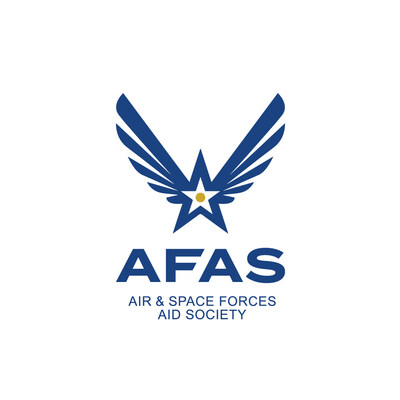DVIDS – News – U.S. and Polish military medical teams forge relations
Sembach, Germany – Brig. Gen. Clinton Murray, commanding general of Medical Readiness Command, Europe along with members of the Landstuhl Regional Medical Center Trauma program and other U.S. military medical personnel from across Europe met recently with members of the Polish Military Institute of Medicine in Warsaw, Poland. The purpose of the meeting was to pool collective resources, accelerate the clinical skill development of Polish military medical providers and advance their trauma treatment program.
The recent meeting in Poland is part of an ongoing collaboration that was set in place by the signing of a landmark Combat Medicine Interoperability Memorandum of Agreement between U.S. and Polish military medical leaders in July 2022. The Combat Medicine Interoperability MOA establishes the scope, principles, and procedures for both nation’s combat medicine professionals to conduct bilateral training activities at two of Poland’s premier military medicine facilities: The Military Medicine Training Center in Łódź and the Military Institute of Medicine in Warsaw.
“As a military physician, we work in two professions. One is a profession of arms, and one is a profession of medicine,” said Brig. Gen. Clinton Murray, commanding general of Medical Readiness Command, Europe. “In a place like Poland, you are always balancing those two. What is uniquely special is that both professions serve in a way that is bigger than our country and ourselves. Having a servant leadership approach to combat medicine creates an essential balance with great partners like the Polish military medical team. It is very exciting and humbling to be part of this partnership.”
The most recent meeting in Warsaw was based on a request by Polish military medical leaders to expand dialogue and support with U.S. military medical forces as they (Poland) develop a more robust military medical trauma program and system.
“Given the current state of geopolitics in Eastern Europe, engagement and training with our Polish military health partners is critical,” said Lt. Col. Brad Rittenhouse, a medical doctor assigned to Landstuhl Regional Medical Center. “Through this partnership we learn about the high quality of Polish military medical care and will be able to lay the groundwork for a combined trauma system in NATO. This partnership increases interoperability throughout the alliance and provides a mechanism to improve the care of injured servicemembers throughout Europe.”
Among the topics covered during the recent meeting were information technology requirements, ways to train Polish trauma team members, surgical team development, skill building, outreach programs, hospital level chemical/biological/radioactive/nuclear response development and the potential for Polish military personnel to attend trauma training at Landstuhl Regional Medical Center and the United States for initial training.
The memorandum of agreement between Poland and United States military medical leaders furthers medical relations between the two militaries establishes field training for Polish medical forces.
“Trauma teams are not new to the reality of our institute,” said Lt. Col. Roszczyk-Hinc, a member of the Polish Military Institute of Medicine. “With the establishment of the Trauma Center, we build and improve these capabilities. The cooperation with representatives of the Landstuhl Regional Medical Center last year, is the next stage of this development.”
Lt. Col. Roszczyk-Hinc noted that with the increased number of soldiers of the allied armies in Poland, the need to expand the area of interoperability, and thus unify the standards of conduct in the field of combat injuries, including multi-organ injuries, became obvious.
According to senior military medical officials, one of the important dimensions of this partnership is the need to exchange medical information to be able to conduct medical research aimed at increasing the quality of care for the injured.
“With each meeting, we can see how much work and enthusiasm the team puts into the development of capabilities, how quickly they assimilate our ideas and experiences, adapting them to the different legal and organizational requirements in force in Poland,” said Lt. Col. Jess Langerud, security cooperation officer with office of the command surgeon, Headquarters U.S. Army Europe and Africa. “We are convinced that this method of training contributes to the overall safety and chances of survival of the wounded and injured.”
Another intended outcome of this new partnership is to increase participation of Polish military medical assets into joint exercises and training in the United States. For example, Poland is developing cooperation with the Illinois National Guard, with whom relations were established during the mission to Chicago at the beginning of the COVID-19 pandemic.
Plans are currently underway between the two countries to execute additional medical training events in both Europe and the continental United States later this year and 2024.
“Some of the planned tasks will be carried out in Polish Military Medical Institute facilities which offer a wide range of possibilities from lectures to exercises using simulation techniques and tissue preparations for practicing surgical procedures,” said Michael Madeyski, director of the military medical component of the Polish Medical Institute. “Due to the presence of soldiers of allied armies in Poland, as well as in the face of tensions in international politics, we see a particularly important need for development in the area of interoperable medical capabilities.”
| Date Taken: | 06.29.2023 |
| Date Posted: | 06.29.2023 05:47 |
| Story ID: | 448259 |
| Location: | DE |
| Web Views: | 13 |
| Downloads: | 0 |
PUBLIC DOMAIN
This work, U.S. and Polish military medical teams forge relations, by Kirk Frady, identified by DVIDS, must comply with the restrictions shown on https://www.dvidshub.net/about/copyright.


 Private Internet Access gives you unparalleled access to thousands
of next-gen servers in over 83 countries and each US state. Your
VPN experience will always be fast, smooth, and reliable.
Private Internet Access gives you unparalleled access to thousands
of next-gen servers in over 83 countries and each US state. Your
VPN experience will always be fast, smooth, and reliable.
